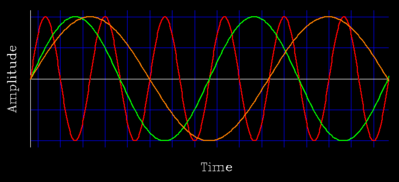Frequency
Frequency is the rate at which an entity, such as a star, completes cycles of rotation. The frequency of a wave refers to how many times it oscillates in a given time. The number of cycles, or oscillations, per second is usually given the unit Hertz or Hz. Thus light, being wave-like in nature, can have its frequency measured. Many atoms and molecules emit light with well-defined frequencies.

Stars like pulsars rotate very rapidly, and astronomers often talk about their rotation frequencies.
The inverse of frequency, f is the period, P:
f = 1/P
The velocity, v of a wave is the frequency multiplied by its wavelength, λ, ie
v = f λ
Study Astronomy Online at Swinburne University
All material is © Swinburne University of Technology except where indicated.

